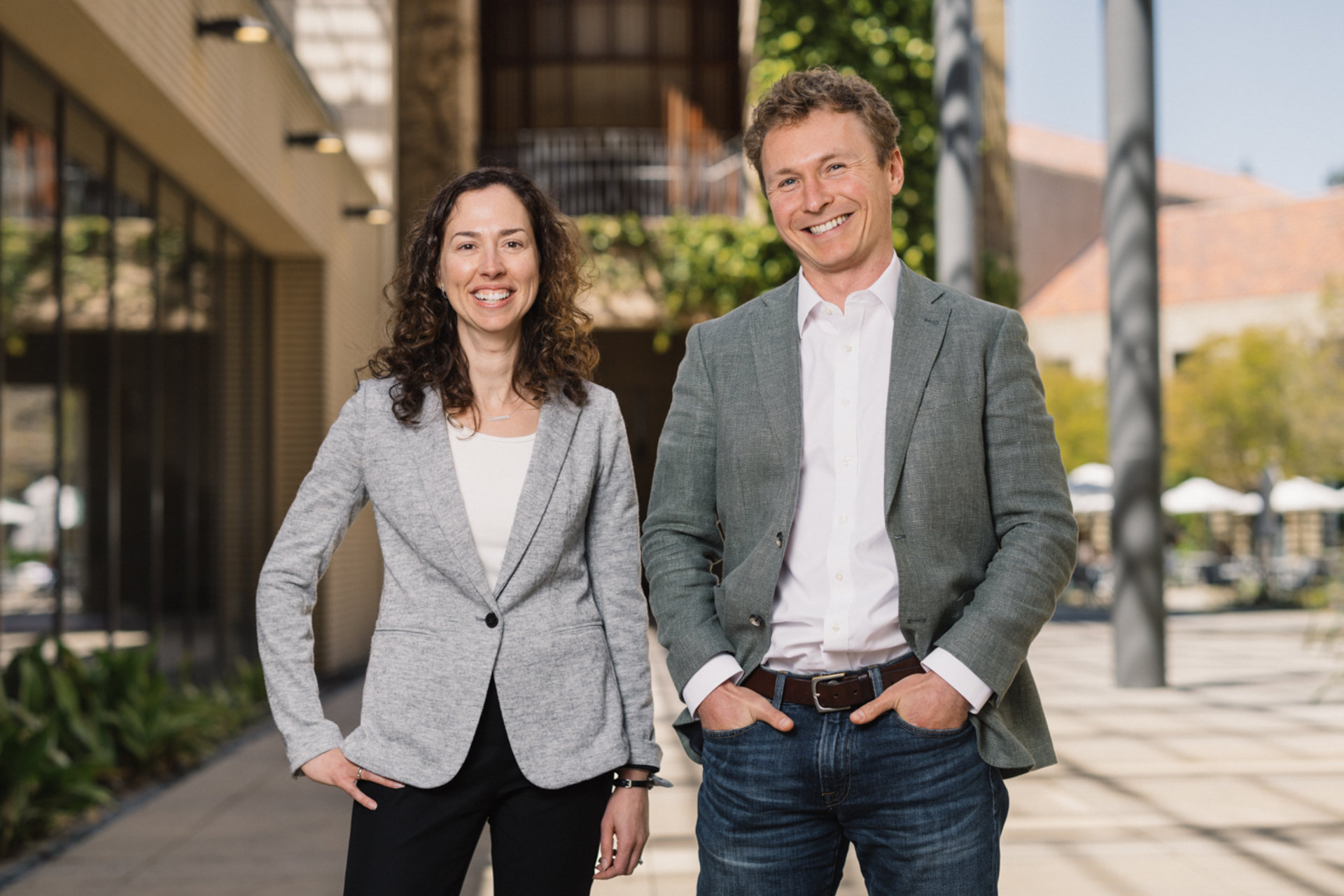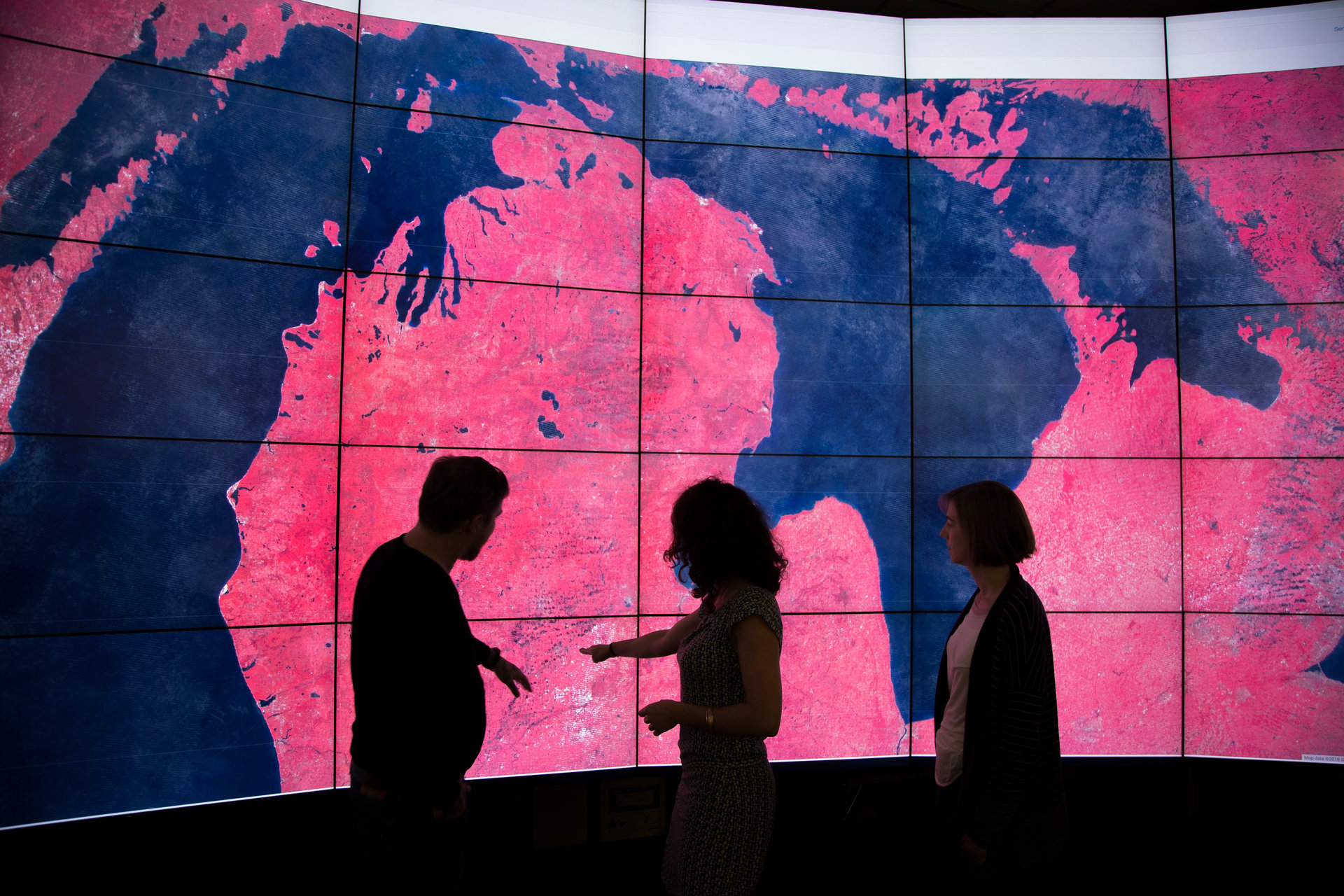New courses to explore intersections of Earth, climate, society
The undergraduate and graduate offerings will be taught by faculty members from across all seven schools at Stanford.
In its first year of operation, the Stanford Doerr School of Sustainability will offer a spectrum of new courses designed to attract enrollment from all corners of campus and to cultivate the deep knowledge needed to foster a sustainable future. The offerings stem from a call for proposals that started nearly a year before the school’s September 2022 launch.
“We heard from students, faculty, academic staff, and alumni about where they hoped we would fill some gaps,” said Nicole Ardoin, an associate professor of education who co-led the Education transition team in developing curriculum recommendations for the school along with Mark Horowitz, a professor of electrical engineering and of computer science. “These are not meant to replace existing courses – the new ones aim to more broadly recognize all the types of thinking we need to tackle large sustainability challenges.”
The undergraduate and graduate courses cover topics such as health, communication, social change, philanthropy, and more, combining expertise from across Stanford’s seven schools. Several feature keystone experiences focused on sustainability – such as community engagement or immersive, off-campus learning – to foster education beyond the classroom.
More than a dozen new courses will gradually roll out from fall 2022 through spring 2023 and will be joined by additional courses and degree programs over subsequent years.
Creating intersections
In the proposal process, the selection team elevated courses that addressed known gaps in existing sustainability and climate curricula, including intersections of environment, energy, and sustainability with race, power, and equity; environmental ethics and philosophy; climate and ocean systems; and sustainable development.
Listings such as Imagining Adaptive Societies – an exploration of speculative fiction as a more positive vision of the future – and Media and Environment – a study of how artistic media can challenge perceptions of the planet – aim to bring attention to unexplored paradigms.
In Environmental Humanities: Finding Our Place on a Changing Planet, undergraduates will learn from a teaching team that includes a planetary health expert from the School of Medicine, a theoretical ecologist from the Woods Institute for the Environment, and a biologist from the School of Humanities and Sciences – several of whom will also have an appointment in the Doerr School of Sustainability. By engaging the work of environmental philosophers, cultural ecologists, artists, Indigenous scholars, and others with land-based knowledge, the course will prompt students to think deeply about humanity’s place in the world and explore strategies to change our course.
“A humanistic way of understanding the world around us is a critical lens – it opens up our understanding; it opens up our empathy,” said Ardoin, who is also faculty director of the Emmett Interdisciplinary Program in Environment and Resources (E-IPER). “If we don’t consider all of these lenses together, we lose a huge part of the toolbox that we need to be able to address and understand the world around us.”
The new courses were conceived and developed during the new school transitional period over the past year and a half. Some expand upon existing courses, featuring new elements of sustainability or interdisciplinary collaboration, or will be offered to broader audiences through the school.
Taking the Pulse of the Planet, an entirely new course, features a 10-person teaching team that brings expertise on sensing technologies, oceans, atmosphere, earthquake hazards, and more.
Fostering understanding
When Graduate School of Business (GSB) professor William Barnett received the call for new courses, he was immediately excited about the prospect of working with students who will be discovering sustainability solutions.
“Every day, I wake up aware that we do not yet know what we need to know to make the world sustainable,” said Barnett, who is now also a professor in the Stanford Doerr School of Sustainability. “My courses are designed not to deliver solutions that we already know, but to help students design the systems that discover those solutions.”
In Environmental Sustainability: Global Predicaments and Possible Solutions, an undergraduate course, Barnett teaches along with Chris Field, a professor of biology and of Earth system science, and director of the Stanford Woods Institute for the Environment. The course, which is part of the new COLLEGE curriculum required of first-year students, will walk participants through the fundamental challenges facing humanity.
“When people hear about sustainability challenges, most react by thinking about what they should do as a consumer, such as to buy a reusable water bottle,” said Barnett, who will also have an appointment in the Doerr School of Sustainability. “That’s a good first start, but it’s not enough.”
The course explores the global biological, cultural, social, and economic processes involved in environmental sustainability, with the goal that students carry that knowledge forward into their Stanford experience – regardless of their eventual major. Barnett will also be teaching a PhD-level course, Organizations and Sustainability, that will survey social science research on how organizations play a role in bringing about a sustainable world.
Highlighting the humanities
Two medievalists will be challenging students to critique humanity itself to gain insights about our sustainable future.
One of the courses taught by Elaine Treharne and Kathryn Starkey is an Introductory Seminar (IntroSem): Ecologies of Communication. The small, hands-on elective designed specifically for frosh and sophomores will explore how the remnants of cultures will be discovered and interpreted by future generations, viewing the human record itself as a resource.
“One of the things that Stanford and many other institutions are doing at the moment is pushing this idea of fixing the world or solving tomorrow's problems today – and my question would be, ‘Why? Who will that go on to benefit?’” said Treharne, a professor of English in the School of Humanities and Sciences. “These are really important questions and they affect our decision makers right now.”
“What we're hoping the students take away from the course is, among other things, the ability to ask these questions and to think in terms of a long history, with ethical questions, political questions, social justice issues, and rhetoric – all of these aspects are really central to humanities approaches,” said Starkey, a professor of German studies.
The second course they developed, a graduate-level seminar called The Sustainability of the Human Record, explores what might constitute a future Rosetta stone with the surviving monuments, texts, and languages of 2022: What ensures future people will know how to avoid the deadly nuclear dumps and climate breakdown created now?
“Flooding is a big issue now, and especially because of the changing of the course of rivers and the building of dams in the last 300 years or so,” Treharne said. “If scientists talked to humanists, the humanists would say, ‘If we look at these 11th-century place names in Europe, or ancient Native American place names where they survive, we would know not to build there, or not to change the course of that river.’”
Next steps
Leaders at the Doerr School of Sustainability are continuing to develop curriculum ideas and learning opportunities that engage a broad range of students at Stanford, including an offering through the Stanford Graduate Summer Institute (SGSI) – a weeklong immersive experience for incoming and current graduate students – new introductory courses, a lecture series, and more.
“We are excited to build a sustainability curriculum across the university and we want faculty to know we have an open door for anyone interested in teaching in collaboration with the school,” said Anjana Richards, director of transition planning and implementation for the Doerr School of Sustainability, who helped organize the call for proposals in addition to spring 2022 workshops attended by more than 90 instructors to brainstorm future teaching ideas and build community.
Faculty and staff interested in collaborating should email education_sustainability@stanford.edu. Students interested in searching for future learning opportunities can browse by subject under Doerr School of Sustainability from the main Explore Courses landing page. For general information for students about curriculum development thus far, visit Q&A: Education programs within the new school.
Explore More
-
The Stanford Forum on the Science of Energy Transition brought together scientific experts, technology innovators, and industry leaders to explore practical pathways to a decarbonized future.
-
A unique hands-on class teaches Stanford Law School students how to work with early-stage companies that have the potential to move the needle on climate and sustainability.
-
The first group of scholars supported under the new Sustainability Accelerator Fellowship program will focus on the challenge of removing billions of tons of greenhouse gases annually from Earth’s atmosphere by the middle of this century.




